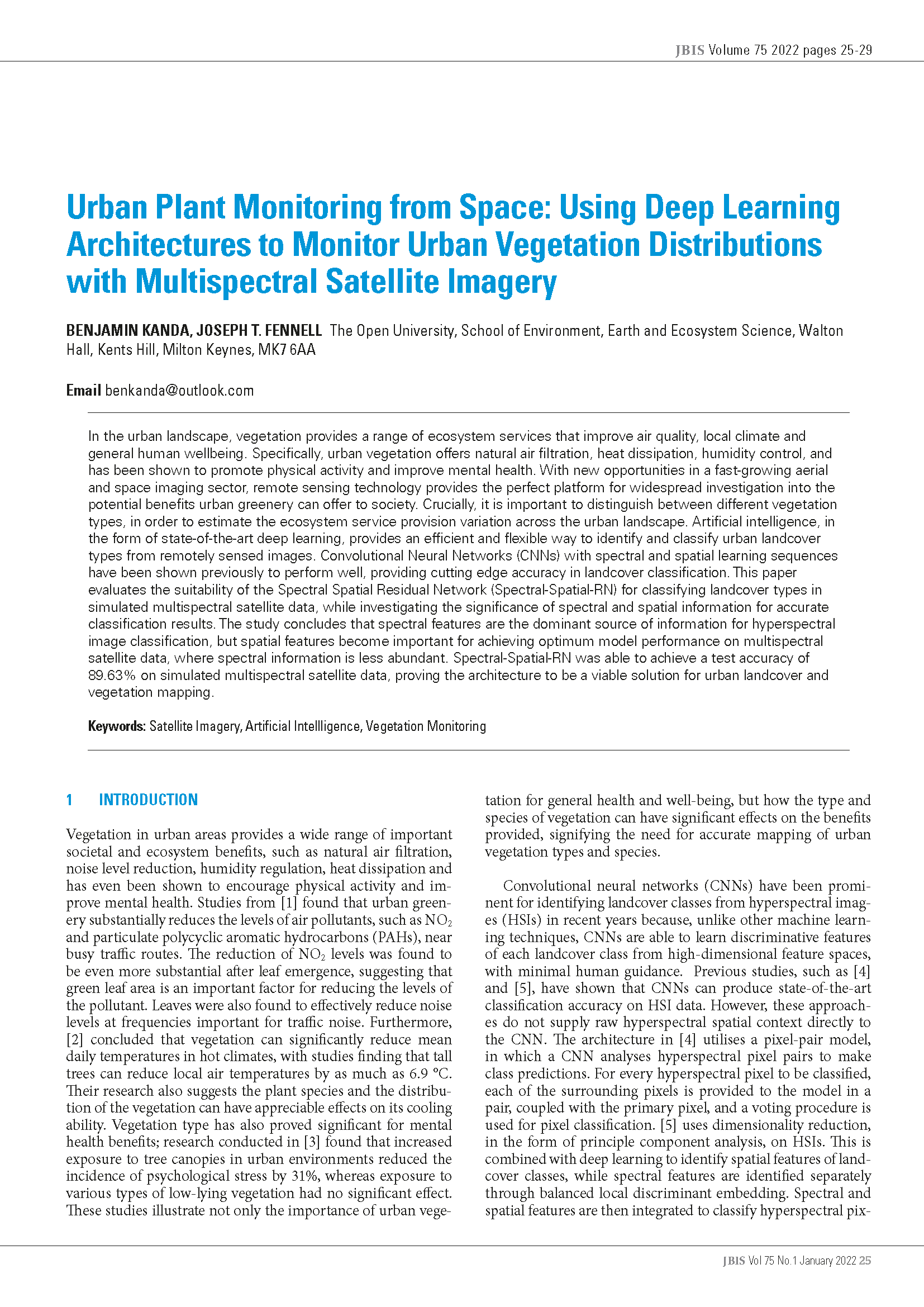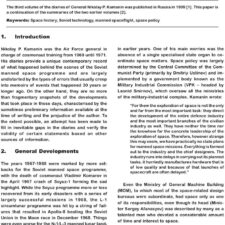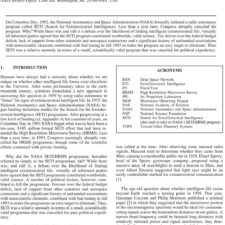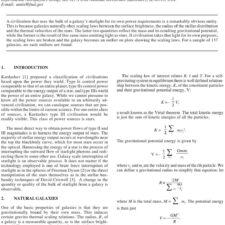Urban Plant Monitoring from Space: Using Deep Learning Architectures to Monitor Urban Vegetation Distributions with Multispectral Satellite Imagery
£5.00
Benjamin Kanda (2022), JBIS, 75, pp.25-29
Refcode: 2022.75.025
DOI: n/a
Abstract:
In the urban landscape, vegetation provides a range of ecosystem services that improve air quality, local climate and general human wellbeing. Specifically, urban vegetation offers natural air filtration, heat dissipation, humidity control, and has been shown to promote physical activity and improve mental health. With new opportunities in a fast-growing aerial and space imaging sector, remote sensing technology provides the perfect platform for widespread investigation into the potential benefits urban greenery can offer to society. Crucially, it is important to distinguish between different vegetation types, in order to estimate the ecosystem service provision variation across the urban landscape. Artificial intelligence, in the form of state-of-the-art deep learning, provides an efficient and flexible way to identify and classify urban landcover types from remotely sensed images. Convolutional Neural Networks (CNNs) with spectral and spatial learning sequences have been shown previously to perform well, providing cutting edge accuracy in landcover classification. This paper evaluates the suitability of the Spectral Spatial Residual Network (Spectral-Spatial RN) for classifying landcover types in simulated multispectral satellite data, while investigating the significance of spectral and spatial information for accurate classification results. The study concludes that spectral features are the dominant source of information for hyperspectral image classification, but spatial features become important for achieving optimum model performance on multispectral satellite data, where spectral information is less abundant. Spectral-Spatial-RN was able to achieve a test accuracy of 89.63% on simulated multispectral satellite data, proving the architecture to be a viable solution for urban landcover and vegetation mapping.
Keywords: Satellite Imagery, Artificial Intelligence, Vegetation Monitoring





